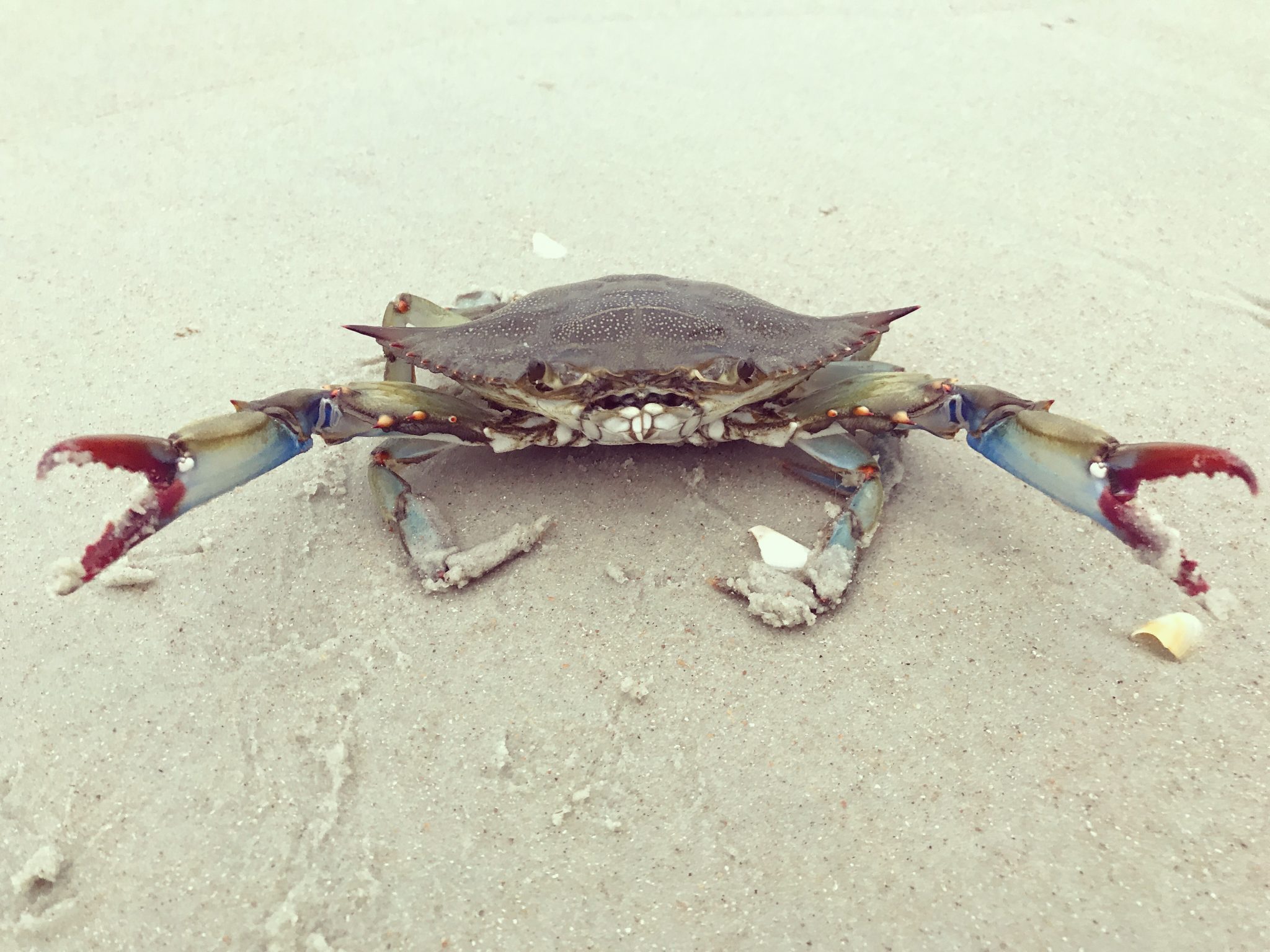Coastal Programs

Blue Crabs in Alabama
3 min read
Crabs, along with shrimp, lobsters, and crawfish, are among the invertebrates called decapods (10 feet) that are included in the class Crustacea. More than 1,200 species of crabs are found throughout the world, and 60 or more are found in Alabama waters.
The blue crab (Callinectes sapidus) is the only crab of commercial significance in Alabama. In recent times, commercial blue-crab landings have varied from 1.4 million pounds to more than 4 million pounds. Dockside values (amounts paid to fishermen) have ranged from 0.5 million dollars to more than 3 million dollars. The recreational catch is estimated at 20 percent of the commercial catch, although there are no reliable figures.
Identification
Blue crabs belong to the family Portuniae, or the swimming crabs. The blue crab’s last pair of legs end in swimming paddles. Another feature of blue crabs is a wide shell with a strong, sharp spine on either side. Other, very similar species are found in our area, but the majority of crabs caught in the bays and bayous of Alabama are blue crabs.
Males have a narrow, T-shaped abdomen; females have a triangular abdomen which becomes circular after they molt (shed) for the last time.
Biology
Female blue crabs mate only once, usually from March through November. Mating takes place during molting with the male carrying the female beneath him. The females are capable of storing the sperm for up to a year, during which time they may lay eggs (spawn) several times. Most spawning occurs from May through September, although females that mate in the late fall can delay spawning until the following spring. Mated females tend to move to higher salinity water while males are often found in very low salinity water.
Females carry up to 2 million eggs on their abdomens. The eggs hatch about 2 weeks after fertilization. The resulting larvae go through a succession of stages during which they are called zoeae and then megalopae. These stages take 37 to 56 days to complete and end with a small (1/8-inch wide) juvenile crab. Like most commercially and recreationally important marine species, juvenile crabs depend heavily on the food and protection found in the tidal wetlands of the bays and bayous for good growth and survival.
Blue crabs grow rapidly, feeding on clams, mussels, oysters, snails, fish, and decaying matter, and they can reach harvestable size (5 inches) in 1 year. To grow, blue crabs must shed their hard, outer skeletons and produce new ones of a larger size. Small crabs shed their shells every few days. The time between molts gets longer as the crab gets older. Crabs caught within an hour or two of molting are called soft-shell crabs and are a highly valued delicacy. Male crabs continue to molt throughout their lives, but females stop molting after they are first mated, which occurs at about 1 year of age.
Management
Blue crabs in Alabama are managed primarily by a 5-inch minimum size limit as measured across the widest part of the back. The size limit does not apply to premolt crabs taken solely for the purpose of shedding, when they will become soft-shell crabs, or to crabs sold for use as bait. Other restrictions include limiting the size of the crab trap to 27 cubic feet, requiring that all traps be marked with a buoy no smaller than 6 inches in diameter, and prohibiting traps within 100 yards of a marked channel. Traps may not be removed from the water between sunset and 1 hour before sunrise. A commercial license is required to sell crabs or if more than five crab traps are deployed. Check with the Marine Resources Division (251-861-2882 or 251-968-7576) for the most recent regulations.
Soft-Shell Crabs
The demand for soft-shell crabs is traditionally met by culls from the regular catch and by crabs netted in shallow bay waters at night. A more sophisticated method involves holding crabs that appear close to shedding in wooden boxes with running sea water until they shed. This method has evolved into a closed system in which water from the shallow boxes is recirculated through oyster-shell filters and back to the boxes. Such a system can hold 150 crabs in each 8- by 4-foot box and has proven to be profitablefor those willing to spend the necessary time to sort and harvest the crabs.
This work is partly a result of research sponsored by NOAA, Office of Sea Grant, Department of Commerce, Under Grant No.
NA16RG2258. MASGP-05-26

